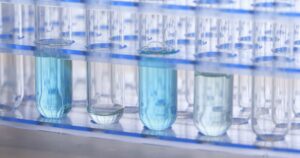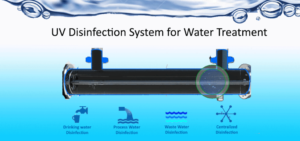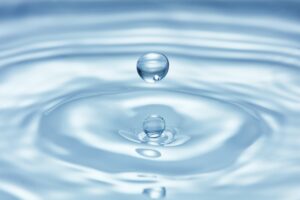Where Do We Get PH?
The term pH is a mathematical expression for the concentration of Hydrogen ions in solution, and is commonly used to describe how acidic or basic water is. A pH of less than 7 indicates that there are more Hydrogen ions than Hydroxide ions and is acidic. A pH greater than 7 indicates that there are more Hydroxide ions than Hydrogen ions and is basic. A pH of 7 indicates that there are equal numbers of Hydrogen and Hydroxide ions and is neutral.
Resistance of DI water
Water by itself does not conduct electricity very well and has a high resistance to electrical flow. One way in which the quality of deionized water is expressed is by its Specific Resistance. Good quality deionized water has a specific resistance of at least 10 million ohms (megohm). The more ions present in water, the lower the specific resistance. This idea figures into the measurement of pH in DI water.
Measurement of pH
Measurement of pH, by means of a pH meter, involves two electrodes. One electrode is a reference electrode which establishes the ionic strength of the solution. It does so under the assumption that Chloride ion (CI) represents the bulk of the ions present in the solution and uses a Chloride (also known as Calomel) electrode to establish the reference point. The second electrode, a Hydrogen ion electrode, measures the concentration of Hydrogen ion. The electrical potential difference between the two electrodes is translated by the meter into a number called pH.
Two Problems:
The First Problem – Why Is The pH So Acidic (or Basic)?
There are no Chloride ions deionized water greater than 10 megohms. So, the pH meter reference electrode in unable to set up an accurate reference point from which to measure pH. Therefore, whenever pH meter electrodes are placed in freshly drawn deionized water, the meter provides a reading which is incorrect. The reading obtained will depend upon the type of electrode connected to the meter. Dual electrodes usually give a pH reading of around 5.8. A combination electrode usually gives a reading of 8.5. They will do this simultaneously in the same beaker of water.
To measure the pH of deionized water it is necessary to add a crystal or two of Potassium Chloride to the water. After this has been done, pH will be around 6.5 – 6.8.
How can the user know that the pH of DI water is 7.0?
With typical laboratory pH meters, in open beakers, it is not possible to obtain a pH of 7.0 in deionized water. Adding Chloride ion to the water will give only an indication that the pH might have been 7.0 before the water was placed in the beaker. However, it is possible to answer the question of pH indirectly.
Deionized water (>10 megohm specific resistance) is essentially ion free. (If it were not, because dissolved ions conduct electricity, the resistance would be less than 10 megohm.) If the specific resistance is found to be greater than 10 megohm, then there are not enough ions present to conduct electricity. So, there is also no excessive concentration of Hydrogen or Hydroxide ions. Therefore, the pH must be 7.0 or neutral. Conversely, if there were enough excess Hydrogen or Hydroxide ions to shift pH to the acid or base sides of the scale, the specific resistance would be less than 10 megohm.




